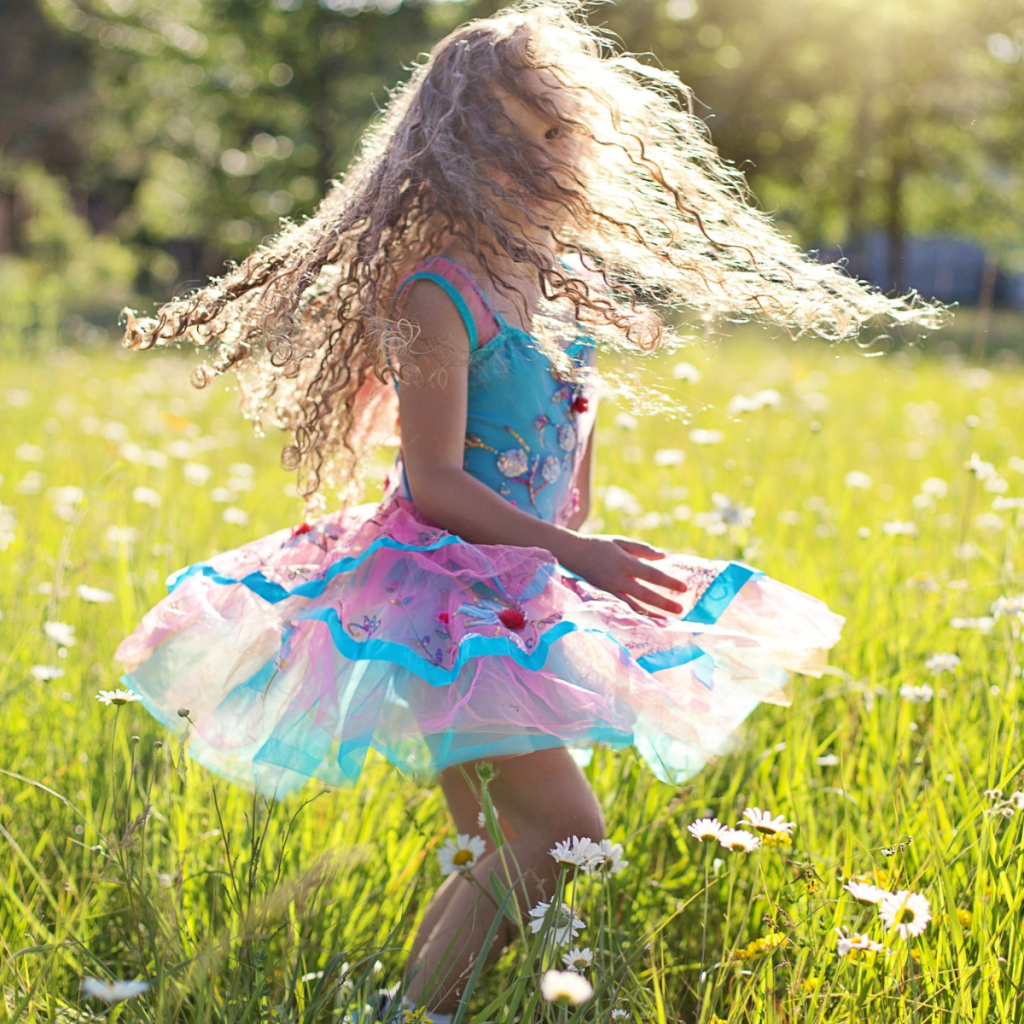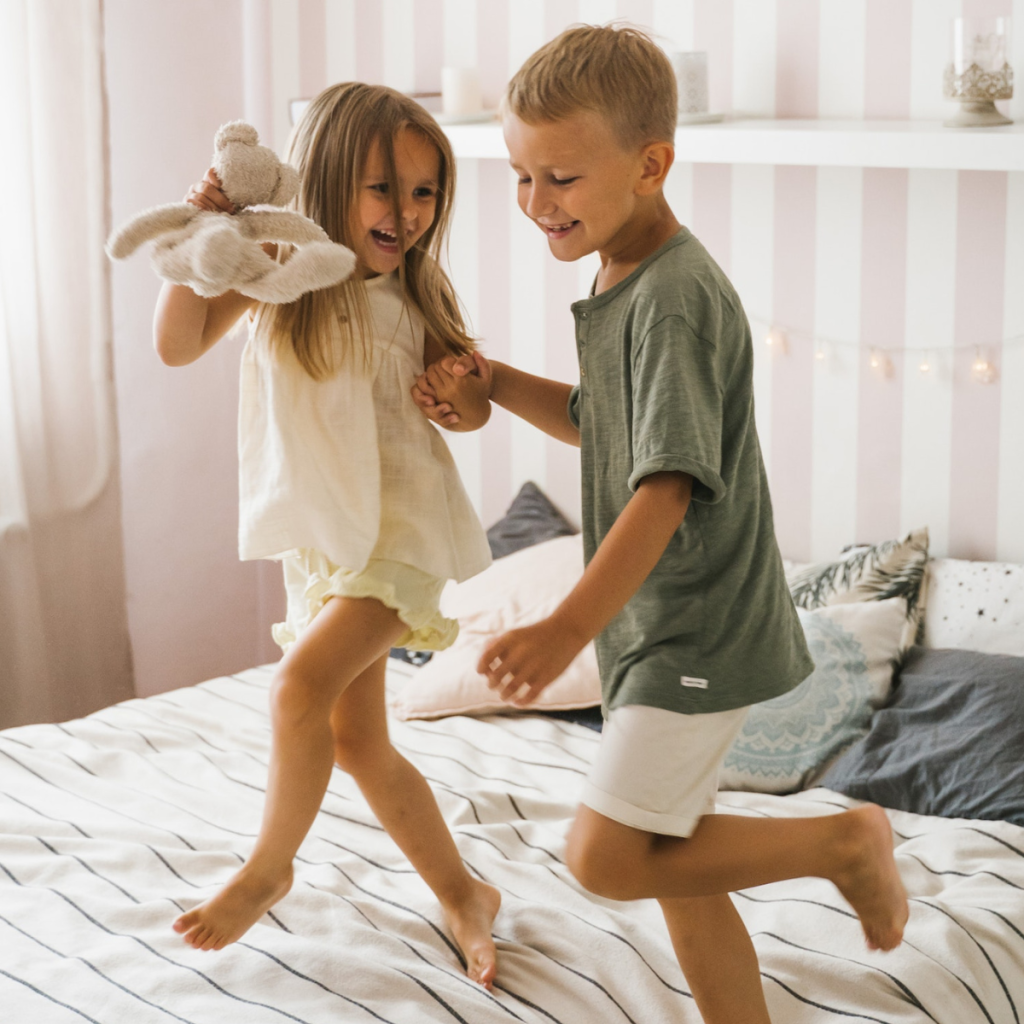Discover effective strategies and tips for teaching dancing to 7-8 year old children.
How to Teach Dancing to 7-8 Year Old Children
Hey there, dance enthusiasts! Are you ready to embark on a journey into the wonderful world of teaching dancing to 7-8 year old children? Well, get those dancing shoes on and let’s dive right in!
Understanding the Basics of Dance Education for Children

Before we start busting out those dance moves, it’s important to understand why dance is so vital for child development. Dance promotes physical fitness, boosts creativity, improves coordination, and builds self-confidence. So, let’s shimmy our way into discovering the importance of dance for these young learners!
Dance education for children goes beyond just learning the steps and routines. It is a holistic approach that nurtures their physical, cognitive, and emotional growth. Through dance, children develop a sense of rhythm, body awareness, and spatial intelligence. They learn to move their bodies in sync with the music, creating a beautiful harmony of motion.
Moreover, dance enhances emotional expression in children. As they sway, twirl, and leap, they learn to express their feelings through movement. Dance becomes a language through which they can communicate their joy, sadness, excitement, or any other emotion that fills their hearts.
Teamwork is another essential skill that dance instills in children. Whether it’s performing in a group routine or partnering up for a dance duet, children learn to collaborate, cooperate, and support each other. They understand the importance of working together towards a common goal, fostering a sense of unity and camaraderie.
The Importance of Dance for Child Development
Dance is not just about fancy footwork and graceful moves. It is a powerful tool for child development. By engaging in dance, children develop a sense of rhythm, body awareness, and spatial intelligence. Dance also enhances their emotional expression and encourages teamwork. So, let’s embrace the magic of dance together!
Physical fitness is a crucial aspect of dance education. Through various dance movements, children improve their cardiovascular health, flexibility, and strength. They develop better posture, balance, and coordination, which are essential for their overall physical well-being. Dance becomes a fun and enjoyable way for children to stay active and maintain a healthy lifestyle.
Creativity is another key element that dance nurtures in children. As they explore different dance styles and choreography, they are encouraged to think outside the box and express their unique ideas. Dance becomes a canvas where they can paint their imagination and create something truly extraordinary.
Self-confidence is a trait that blossoms through dance. As children master new dance steps and routines, they gain a sense of accomplishment and pride in their abilities. They learn to trust their bodies and believe in their own capabilities. Dance provides a platform for children to showcase their talents and shine brightly on stage.
Tailoring Dance Lessons for 7-8 Year Olds
Teaching dance requires tailoring your lessons to suit the needs of these energetic little humans. Encourage their creativity by allowing them to express themselves through movement. Provide age-appropriate dance routines and activities that challenge them while keeping the fun factor high. Let’s create a dance session that they’ll jump for joy to attend!
At the age of 7-8, children are bursting with energy and enthusiasm. They are eager to explore and try new things. Therefore, dance lessons for this age group should be dynamic, engaging, and interactive. Incorporate games, storytelling, and imaginative play into the dance curriculum to capture their attention and make learning a joyful experience.
It’s important to strike a balance between structure and freedom in dance lessons for 7-8 year olds. While providing a structured framework for learning dance techniques, allow room for their individuality and self-expression. Encourage them to add their own flair to the dance routines, fostering a sense of ownership and creativity.
Furthermore, it’s essential to create a positive and supportive environment in dance classes. Encourage children to cheer for each other’s accomplishments, celebrate their progress, and embrace their unique styles. By fostering a sense of inclusivity and acceptance, children feel safe to explore and take risks, ultimately enhancing their growth and development as dancers.
Preparing Your Dance Lessons
Alright, now that we’ve got our rhythm and groove, it’s time to put together an outstanding dance lesson plan. Let’s start with choosing the right dance style for our enthusiastic mini-dancers.
Choosing the Right Dance Style for Children
When it comes to selecting dance styles for our little maestros, remember to keep it diverse. Introduce them to various genres such as ballet, hip hop, and jazz. Give them a taste of different rhythms and styles, allowing them to find their own unique dance personality. Let their inner swans and hip-hop stars shine!
For ballet, you can teach them the elegance and grace of classical movements. Guide them through the positions of the feet, arms, and body, and let them experience the joy of dancing on their tiptoes. Encourage them to express their emotions through fluid and graceful movements, like little ballerinas in a fairy tale.
When it comes to hip hop, let their energy burst through the dance floor. Teach them the basic moves like popping, locking, and breaking, and watch as they groove to the beats with their own funky style. Encourage them to freestyle and express themselves through the rhythm and attitude of hip hop.
Jazz dance will introduce them to a world of syncopated rhythms and dynamic movements. Teach them the importance of isolations, turns, and jumps, and let them explore their own sense of style. Jazz dance allows them to be sassy, energetic, and full of personality, as they learn to move to the upbeat tunes.
Creating a Fun and Engaging Dance Environment
A successful dance lesson goes beyond just teaching the steps. It’s all about creating a vibrant and stimulating environment where the kids can unleash their creativity. Use colorful props, play catchy music, and incorporate imaginative stories into the routines. Let’s transform the dance floor into a magical realm that captivates their hearts!
Imagine setting up a scene where the kids are dancing in a tropical rainforest, surrounded by vibrant flowers and exotic animals. As they move and groove, they can pretend to be monkeys swinging from tree to tree or birds soaring through the sky. This immersive experience will not only make the dance lesson more enjoyable but also spark their imagination and storytelling abilities.
Another way to engage the children is by incorporating popular children’s songs and nursery rhymes into the dance routines. They can dance and sing along to familiar tunes, adding an element of familiarity and excitement to the lesson. Encourage them to come up with their own dance moves and create a mini-performance at the end of each class.
Additionally, don’t forget to create a positive and encouraging atmosphere. Applaud their efforts, provide constructive feedback, and celebrate their progress. Let them know that their hard work and dedication are valued and appreciated. This will boost their confidence and motivate them to continue exploring the world of dance.
Teaching Techniques for Young Dancers
Now that we have established a solid foundation, it’s time to focus on teaching techniques that are tailored to the needs of our young dancers. As dance educators, it is our responsibility to create a nurturing and supportive environment where our little ones can thrive.
When working with young dancers, it is important to remember that complex dance moves can be intimidating for them. Their bodies are still growing and developing, and their coordination may not be fully developed yet. Therefore, it is crucial to break down the steps into manageable chunks and gradually build up their repertoire.
Simplifying the moves while still maintaining the essence of the dance style is key. By doing so, we allow our young dancers to feel successful and confident in their abilities. It is important to provide them with a sense of accomplishment, as small steps can lead to big victories!
Simplifying Dance Moves for Children
Complex dance moves can be intimidating for our little ones. Break down the steps into manageable chunks and gradually build up their repertoire. Simplify the moves while still maintaining the essence of the dance style. Remember, small steps can lead to big victories!
In addition to simplifying dance moves, it is also important to incorporate games and interactive activities into our dance lessons. Who said learning can’t be fun? By infusing playfulness into our sessions, we create an environment where our young dancers can enjoy themselves while learning.
There are various dance-related games that we can incorporate into our lessons. One popular game is “Freeze Dance,” where the dancers have to freeze in a pose whenever the music stops. This game not only helps improve their listening skills but also encourages them to explore different movements and express themselves creatively.
Another fun activity is having the young dancers create their own dance routines. By giving them the freedom to choreograph their own moves, we empower them to be creative and develop their artistic voice. This activity also fosters teamwork and collaboration, as they can work together to create a group routine.
Incorporating Games into Dance Lessons
Who said learning can’t be fun? Spice up your dance sessions by incorporating games and interactive activities. Play dance-related games like “Freeze Dance” or have them create their own dance routines. Let’s turn the dance floor into a playground of joy and laughter!
As dance educators, it is our duty to provide our young dancers with a well-rounded dance education. By combining technique, creativity, and fun, we can create an environment where they can grow both as dancers and individuals. So let’s continue to explore new teaching techniques and keep our young dancers inspired!

Overcoming Common Challenges in Teaching Dance to Children
Teaching dance to children may come with its fair share of challenges, but fear not! With a little creativity and understanding, we can conquer them all.
Addressing Short Attention Spans
Children’s attention spans can rival that of a squirrel in a candy store. Combat this by keeping the pace of your lessons lively and dynamic. Incorporate frequent breaks, change up activities, and use visual aids to keep their attention locked in. Let’s keep the dance momentum going!
Dealing with Shyness or Insecurity in Dance Classes
Some children might feel a tad shy or insecure while taking their first dance steps. Foster a nurturing and supportive environment where they feel safe to express themselves. Encourage positive reinforcement, provide gentle guidance, and celebrate their achievements. Let’s help them spread their wings and dance to their heart’s content!
Evaluating Progress and Providing Feedback
Phew, we’ve made it this far! Now, let’s focus on evaluating our mini-dancers’ progress and giving them the feedback they need to grow as dancers.
Setting Realistic Goals for Young Dancers
It’s important to set achievable goals for our young dancers to keep them motivated. Break down larger goals into smaller milestones, allowing them to experience a sense of accomplishment along the way. Let’s cheer them on as they dance their way towards success!
Offering Constructive Criticism and Encouragement
When providing feedback, remember to balance constructive criticism with heaps of encouragement. Focus on what they are doing right and gently guide them towards improving their technique. Let’s unleash their potential through positive affirmation!
And there you have it, dance enthusiasts! With these tips and techniques, you are now equipped to teach dancing to 7-8 year old children like a pro. So, put on your dancing shoes, ignite their passion, and let the rhythm guide their every move. Happy dancing!



